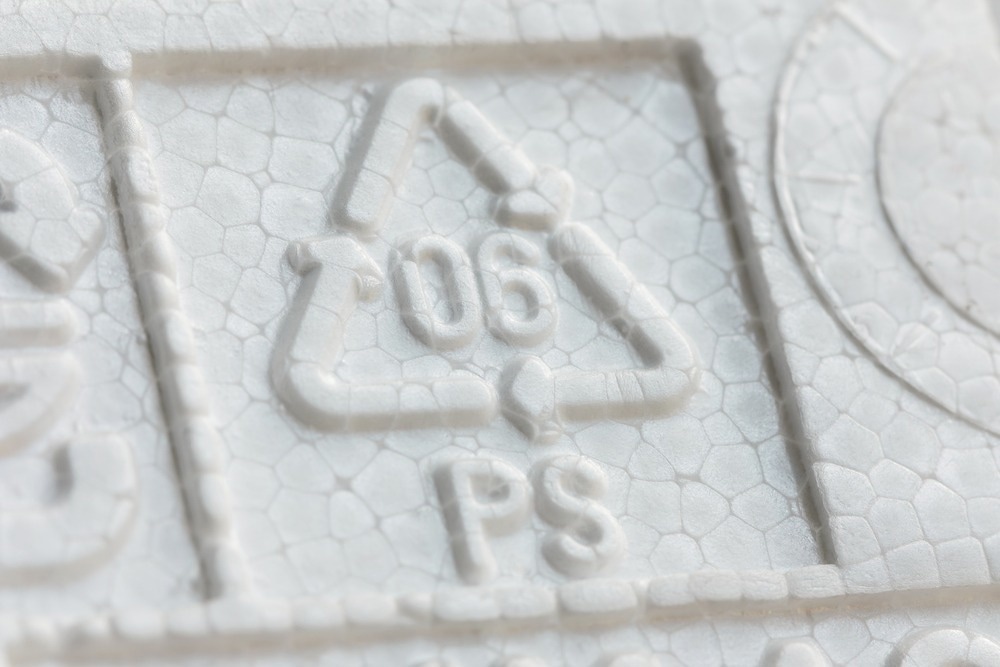The widespread use of nanoplastics has become a major environmental problem because their tiny particles can readily infiltrate biological systems. FT-IR and Raman spectrometry are used to investigate nanoplastics, but these methods face several difficulties when the particles are smaller than 1 micrometer.

Study: A colorimetric detection of polystyrene nanoplastics with gold nanoparticles in the aqueous phase. Image Credit: Daniel Fung/Shutterstock.com
A pre-proof paper submitted to Science of The Total Environment addresses this issue by proposing a colorimetry-based detection technique using gold nanoparticles (AuNPs) for monitoring polystyrene nanoplastics in water through a visible color change.
Nanoplastics: A Serious Environmental Concern
Nanoplastics can be found in salt water, aquatic ecosystems, sedimentary rocks, and drinkable water. When nanoplastics disintegrate, they break down into a larger collection of smaller pieces.
As a result, even if nanoplastic emissions were to cease immediately, the sum of micro- and nanoplastics in the ecosystem would continue to rise. Expanded polystyrene (EPS) is the most commonly found nanoplastic and is responsible for approximately 95% of all nanoplastics. Since EPS is so soft, it is completely swept away by the winds and decomposed into countless nano-sized particles by ocean ripples, solar radiation, and other factors.
As a result, novel colorimetry-based detection methods for easy and long-term monitoring of nanoplastics in the environment are urgently needed.
Limitations of Current Detection Methods
Techniques for detecting nanoplastics are yet to be normalized. However, sequencing, pre-separation, separation, and quantification are some of the basic steps of these methods. After expelling obstructive compounds (such as organic materials) from the specimen, substances suspected of being nanoplastics are sorted by size.
The assessed nanoplastics are then objectively evaluated using spectrophotometric methods like Fourier transform infrared (FTIR) and Raman spectrometry. However, spectroscopic evaluation of nanoplastics necessitates skilled technicians and is both complex and costly.
When compared to non-destructive FTIR and Raman spectrometric methods for detecting nanoplastics, destructive analytical techniques possess several benefits. However, to pass the limit of detection (LOD), these methodologies necessitate extreme pre-concentration of samples, and important information about the particulate matter is lost.
Photoluminescence-based methods, in situ surface-enhanced Raman spectrometry, and fluorogenic secreted nanogels are some recently developed cutting-edge techniques for identifying nanoplastics in water. These methodologies, however, are ineffective for the colorimetry-based identification of nanoplastics.
A Novel Colorimetry-based Detection Method for Nanoplastics
In this study, the researchers postulated a simple and efficient colorimetry-based detection method for monitoring nanoplastics. Since polystyrene (PS) is a common element in nanoplastics, the researchers used colorimetry to examine PS nanoparticles of various sizes and concentrations.
The relationship between nanoplastics with gold nanoparticles (AuNPs) and the resulting color change was used as a marker for the colorimetry-based detection method. Although a few studies have described the agglomeration effect of AuNPs on polymers freely distributed in solution, this agglomeration can be prevented by modifying the surface of AuNPs.
The researchers used this principle to create a colorimetry-based method for detecting nanoplastics in a solution containing polystyrene and AuNPs. After introducing acetone to this solution, some of the PS chains disintegrate and impede the agglomeration of AuNPs, resulting in a color change visible to the naked eye.
Important Findings of the Study
After mixing polystyrene nanoplastics (PSNPs) with AuNPs, up to 60% acetone was introduced to disintegrate some of the polystyrene chains, preventing the agglomeration of gold nanoparticles.
Since acetone has two conflicting properties for AuNPs and PSNPs, a colorimetry-based detection technique for isolating AuNPs and PSNPs can be devised, with red and blue colors correlating to well distributed and severely clustered AuNPs, respectively.
When AuNPs are 20 nm in size, their distribution turns red due to the localized surface plasmon resonance (LSPR) effect, with free electrons cumulatively vibrating under illumination at the excitation frequencies. When AuNPs are close enough together that their plasmon fields coincide, they agglomerate and the solution turns purple or blue, based on the interparticulate distance.
Future Outlook
In this study, the researchers created a novel colorimetry-based detection method for nanoplastics that can detect polystyrene nanoparticles (PSNPs) in water with the naked eye.
Despite some constraints of this colorimetry method in terms of practical applicability and large-scale industrial processes, it is expected that the novel colorimetry based detection method developed in this study will give rise to new techniques capable of measuring various sizes and types of nanoplastics in the future.
Reference
Hong, J.et al. (2022). A colorimetric detection of polystyrene nanoplastics with gold nanoparticles in the aqueous phase. Science of The Total Environment. Available at: https://www.sciencedirect.com/science/article/pii/S0048969722051579?via%3Dihub
Disclaimer: The views expressed here are those of the author expressed in their private capacity and do not necessarily represent the views of AZoM.com Limited T/A AZoNetwork the owner and operator of this website. This disclaimer forms part of the Terms and conditions of use of this website.